What Do Corridor Fight Scenes Reveal About The Future Of CGI & Practical Effects In The SFX Industry?
Admit it. At one point or other, we’ve all been caught up in a trend of some sorts, haven’t we?
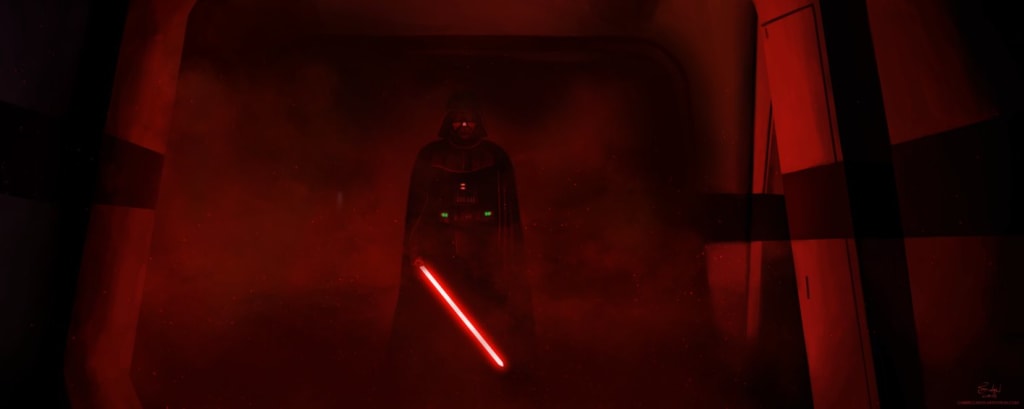
Admit it. At one point or other, we’ve all been caught up in a trend of some sorts, haven’t we? After all, who didn’t download Pokémon Go back in 2016? Everyone wanted to be a part of the action, and even respected celebrities couldn’t wait to get on board with the compulsive game.
Whether they're demonstrating our collective concerns or our “go with the flow” mentality, trends reveal more about us than we realize.
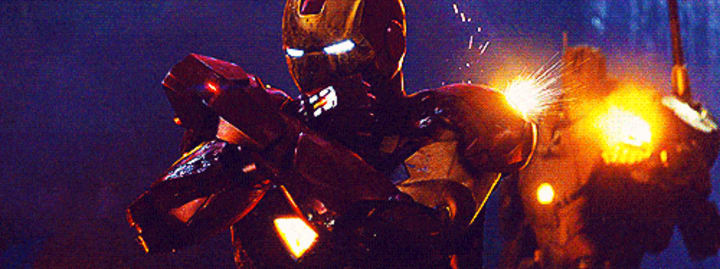
Iron Man faces down the horde of drones [Credit: Marvel Studios]
This is especially evident in the television and movie industry, where studio executives steer their money flow towards catering to the whims of the public. The superhero genre is still in vogue, so it’s no surprise that after Marvel Studios’ huge box-office success, other major networks and studios are forming their own shared universes to capitalize on the success. Through this new approach of multi-story telling, allusions to characters, events and important MacGuffins from the source material are sure ways to ignite excitement.
But what can we infer from the smaller, recurring motifs in the shows and movies themselves? Can the inclusion of a specific set piece hint at something bigger that is at work within the industries at large?
The Popularity of the Corridor Fight Scene
In the past decade especially, there is one kind of brawl that has become the boldest and most dominant way to demonstrate awesomeness in the action genre: the corridor fight scene. As the label suggests, these scenes are long battles inside some sort of hallway, featuring a character that becomes a one-person army against a horde of foes in a devastating show of power.
Indeed, chances are that you recalled some particularly visceral images as soon as you read “corridor fight scene.” If you’re a fan of the output from Netflix and #Marvel, then you have plenty to choose from. #Daredevil has two protracted - yet no less sensational - smack downs in the early episodes of series 1 and 2.
Plus, we also got to see the Punisher’s prison-based trail of carnage in the latter season, and we’d be remiss if Luke Cage’s stoic assault of that apartment block in his own series wasn’t considered. Heck, it even looks like Iron Fist is getting his own too!
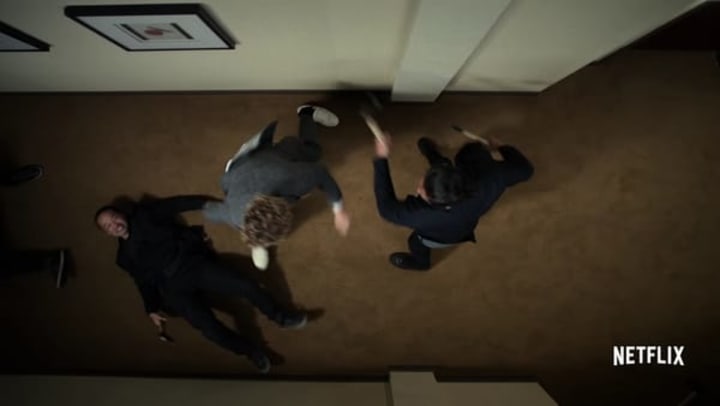
[Credit: Marvel Studios & Netflix]
But as we know, these sequences aren’t limited to our television screens. First made famous by Oldboy and The Raid: Redemption, these long, one shot takes have since been adopted by cinema at large. In the last few years, we’ve seen an increasing amount of variations upon these spectacles, such as Inception’s famous revolving hotel corridor, #ScarletJohansson’s telekinetic prowess in Lucy, and Alice’s (#MillaJovovich) acrobatic assault in Resident Evil: Retribution.
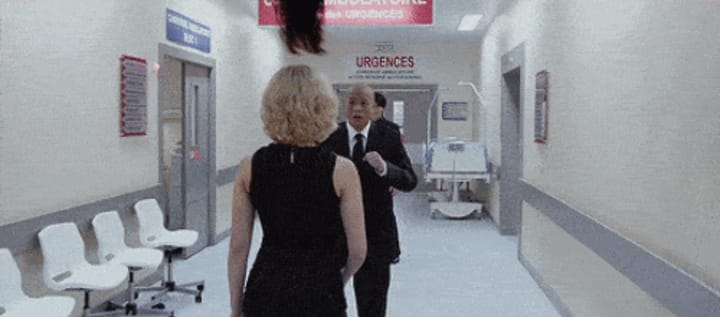
Lucy (Scarlett Johansson) dispatches her attackers [Credit: Universal Pictures]
However, the most famous case from recent times is, of course, the lauded conclusion to Rogue One: A Star Wars Story, which sees #DarthVader slaughter Rebel Soldiers as they attempt to take the Death Star plans off their ship.
Why Are Hallway Battles So Popular?
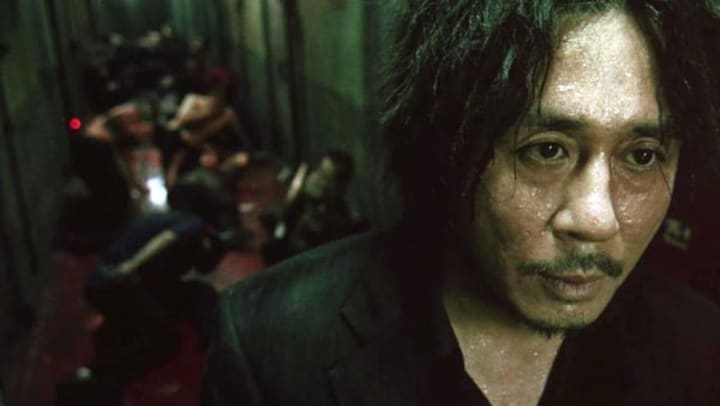
Oldboy's famous hallway fight [Credit: Show East]
Well, story-wise the inclusion of these fight scenes makes a lot of sense. Through their posture and fighting style, audiences can learn a lot about the character’s emotional states and the world around them in a short space of time, all while still being thrilled by the intensity on show.
The appeal of these moments is also obvious to filmmakers and executives, because they comprise the standout “money shots.” Movies and #TV shows aim to continually generate these kinds of thrilling scenes to show off their prowess and commitment to their visions. If they're successful, then fans will continue to discuss them for days afterwards, and thus continue to perpetuate interest in these respective properties.
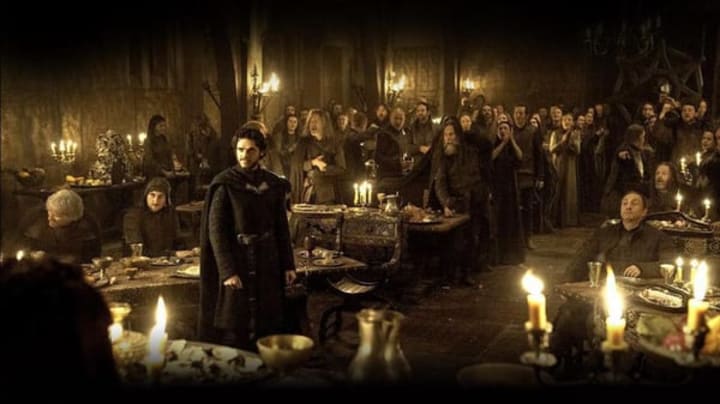
Another of Games of Thrones' most shocking moments [Credit: HBO]
#GameofThrones and #TheWalkingDead in particular have popularized these “water cooler moments,” with scenes such as Ned Stark’s death in Season 1 (sob!). It’s the same with cinema releases as well; who wasn’t talking about that Vader scene after seeing #RogueOne?
Even so, there could also be something else at work her. After all, corridor fight scenes are, by their nature, smaller in scope and cost less than other spectacles. Are these hallway fights also symptomatic of how the television and movie industry may be scaling back on their special effects laden extravaganzas?
Bye Bye CGI?
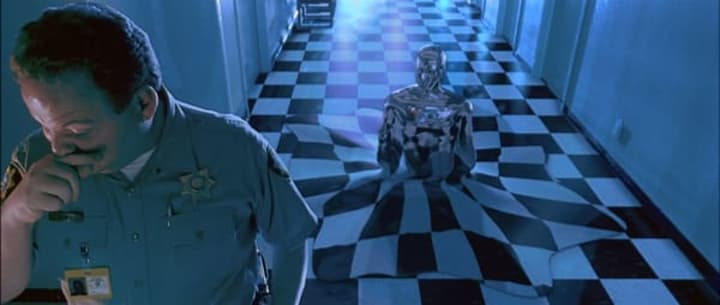
The amazingly rendered T-1000 [Credit: TriStar Pictures]
Computer generated imagery has undoubtedly taken great strides in the last twenty five years. While audiences were wowed by the sleek, shape shifting of Robert Patrick’s T-1000 in 1991, the kind of effects work seen in films such as Terminator 2: Judgement Day has become commonplace, with characters, weather and worlds being designed and created in offices, rather than being replicated onset.
This has unequivocally been a boon to the industry, yet the practice, as we know, is not without pitfalls. For every lusciously designed production as Avatar, there are the almost cartoonish effects of #Wolverine’s claws in X-Men Origins: Wolverine that tarnish the reputation of this industry-wide practice. The lack of substance or tactility to the CGI can “take you out” of the film if you can tell that it’s an effect. When another city is being leveled, how can you care if you know it’s not real?
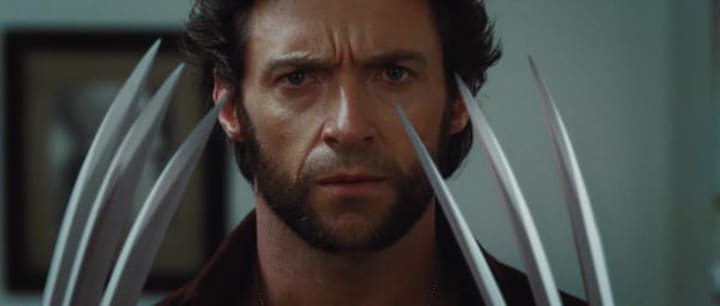
Wolverine and his dodgy claws [Credit: 20th Century Fox]
Reality is dependent upon each person’s perspective. To demonstrate this division perfectly, we only have to look at the reaction to Peter Cushing’s digital resurrection as Grand Moff Tarkin in Rogue One. Ethical questions aside, some fans have raved about its intricacy, hailing it as a landmark in the future of effects-work, while others compared his likeness to a bad video game, referring to it as "monstrous".
Overall, it does seem as though everyone has become more discerning where special effects are concerned. Fans are very quick to point out unfinished VFX shots in trailers, and this attitude has extended into the industry itself.
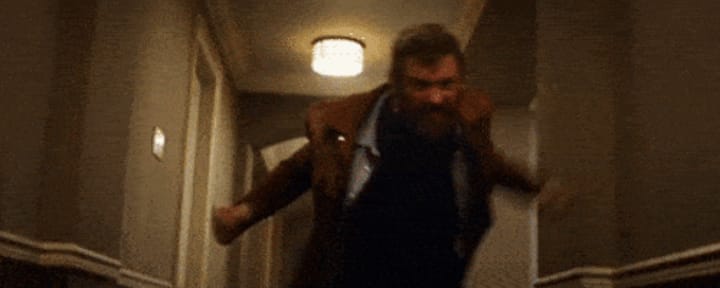
The grim and gritty 'Logan' [Credit: 20th Century Fox]
#Logan director James Mangold famously railed against the excess of modern Hollywood effects in a way that would make the titular grumpy mutant proud. On his Instagram, Mangold posted a page of the shooting script, which notably read:
“...if you're on the make for a hyper choreographed, gravity defying, city-block destroying, CG fuckathon, this ain't your movie.”
The gritty approach that we see in Logan is most certainly reminiscent of the intensity found in the aforementioned corridor battles. So are they both related? Are they part of some larger, industrial shift?
Practical Effects Vs VFX
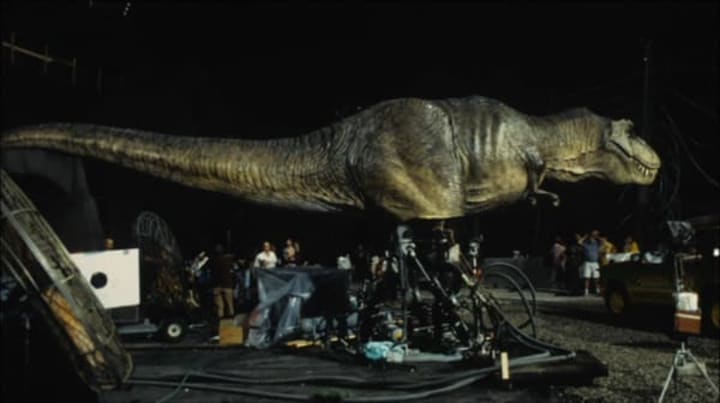
The animatronic T-Rex from Jurassic Park [Credit: Universal Pictures]
Though these hallway assaults are more likely the result of lower budgets and tonal requirements, it really does seem as if CGI is being shunned for older movie making techniques. For example, Steven Spielberg used both animatronics and CGI to bring the dinosaurs to life in Jurassic Park in 1993.
Twenty two years later, Colin Trevorrow lobbied for a robotic Apatosaurus to be made for one of the most touching scenes in #JurassicWorld. He later enthused about the greater fulfillment that was born from the process to Wired:
"We had a team of puppeteers using every tiny motor in this robot's face. They drew a beautiful performance out of the actors -- we couldn't have done it with a computer."
The argument and preference for prosthetics, animatronics, miniatures and real locations appears to be gaining even more traction for projects in production.
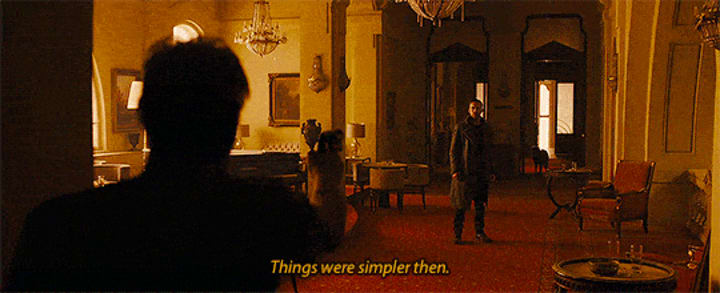
K (Ryan Gosling) meets Deckard (Harrison Ford) in Blade Runner 2049 [Credit: Universal Pictures]
In the most recent edition of Empire Magazine, Kong: Skull Island director Jordan Vogt-Roberts emphasized the importance of shooting on location, labeling it as important to the picture as the actors themselves. And Denis Villeneuve was very quick to reassure fans that Blade Runner 2049 would feature very little digital trickery.
So what does this mean for the future of movies and television? Can we expect even more corridor fights, and similarly old-school settings and techniques?
The Future of Corridor Fights and VFX
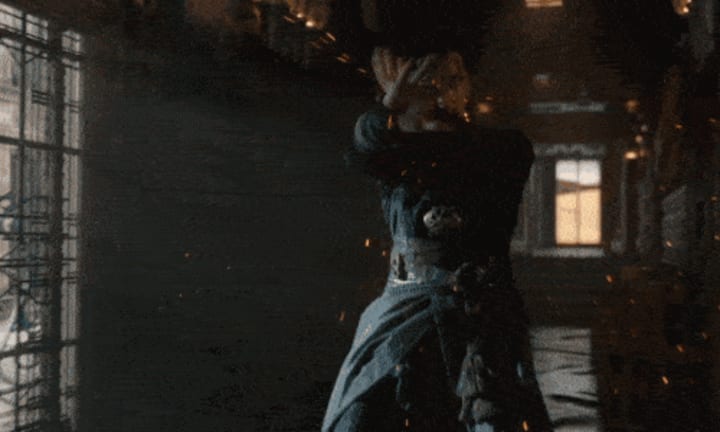
Doctor Strange - a blend of practical and computer generated effects [Credit:Marvel Studios]
It may seem as if we’re fully returning to the days of practical effects, but as ever, it’s not that clean cut. Modern filmmakers don’t just use CGI to create eye-popping wonders, but it’s also harnessed to tinker subtly with movies in ways that are not always obvious. For example, lots of the inclement weather in The Girl With The Dragon Tattoo was created digitally, as was the exterior of #BenAffleck’s house in Gone Girl. You wouldn’t have expected dramas to utilize such methods, but here they are, seamlessly helping the movie makers to subtly heighten the spectacle so that the film succeeds in telling its story well.
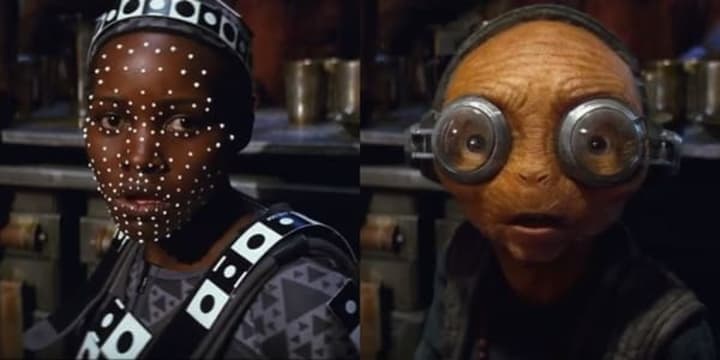
Maz Katana (lupita Nyong'o) before and after post production in The Force Awakens [Credit: Lucasfilm]
Additionally, even the film makers that foregrounded the use of practical effects on the promotional tours still used CGI on a massive scale. Remember how the major hits of Mad Max: Fury Road and Star Wars Episode VII: The Force Awakens were embraced by audiences because of their retro feel? Well, it turns out that they were digitally tweaked far more than they had let on. Heck, several of the corridor fights mentioned at the start of this piece used special effects to merge shots and enhance the experience.
The thing is, many people have noticed just what a nostalgic time we’re living in at the moment, what with the resurrection of old franchises like #StarWars and series like Stranger Things echoing our love of the 80’s. By building up their use of these old practical methods, studios play to our love of the past, and continue to draw in the crowds. As Bryan Curtis says for The New Yorker, the use of corridor fights and practical effects isn’t only about doing what’s best for the film, but rather so that studios:
“...recreate the sensations of a particular period—the sound of A.T.-A.T. walkers marching through the snow, or the feeling of wonder when a child reaches out to pet a dinosaur.”
It also helps that the industry itself has long been nostalgic for its heydays. For example La La Land and The Artist are loving tributes to classical Hollywood, and they have both been rapidly were embraced by the Academy Awards- a clear showcase of their sentimentality.
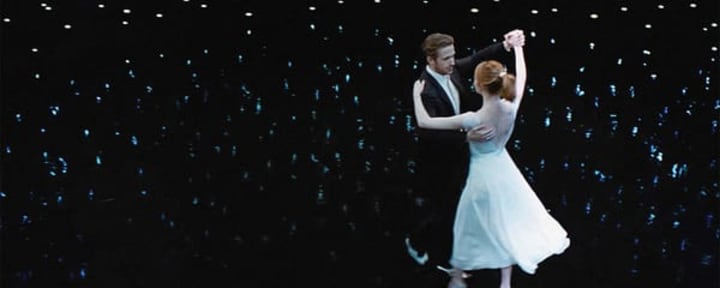
The old style and substance of la La Land [Credit: Summit Entertainment]
However, the fact remains that CGI has become almost indispensable to modern cinema, regardless of the current bashing it receives from directors and fans. This ongoing antipathy towards computer generated effects will no doubt rise and fade in popularity, as talents and types of movies have before it. This has happened before after all, with actors such as Mel Gibson being slowly welcomed back to the fold, and the Western genre slowly making its stumbling steps back into the light.
Eventually, we’ll probably see an even greater synergy between both practical and special effects, with motion capture on the rise and technology improving all the time. Time will tell how this happens, as it will with the popularity of corridor fights, but as ever, we can enjoy it whilst it lasts.

The hallway fight of Inception [Credit: Warner Bros.]
(Sources: Den of Geek, Wired & The New Yorker)
About the Creator
Max Farrow
A fanatical film-watcher, hill-walker, aspiring author, freelance writer and biscuit connoisseur.
These articles first appeared on Movie Pilot between Jan 2016 and Dec 2017. Follow me on Twitter @Farrow91






Comments
There are no comments for this story
Be the first to respond and start the conversation.